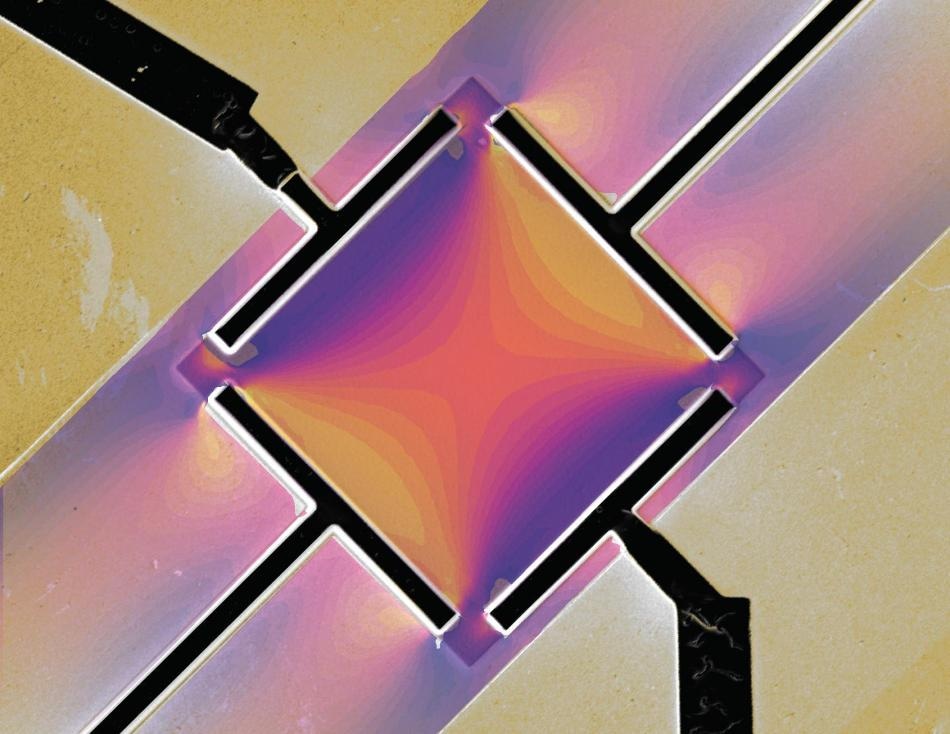Oct 11 2019
For many years, scientists have always been enthralled about superconductivity, as it enables existing technologies to be revolutionized.
 Scientists can define and tune patterns of superconductivity. (Image credit: EPFL)
Scientists can define and tune patterns of superconductivity. (Image credit: EPFL)
Materials become superconductors only at extremely low temperatures. In superconductors, electrons will be able to travel without any resistance. Nowadays, this exceptional zero resistance superconductivity is often found in several technologies, like magnetic resonance imaging (MRI).
However, future technologies will exploit the overall synchronous behavior of electrons in superconductors—a property known as the phase. At present, there is a rush to develop the world’s first quantum computer, which will make use of these phases to carry out calculations.
Traditional superconductors are extremely strong and hard to influence, and the challenge here is to discover new materials in which the superconducting state can be effortlessly harnessed in a device.
Philip Moll, who heads EPFL’s Laboratory of Quantum Materials (QMAT), has been analyzing a particular group of unconventional superconductors called heavy fermion materials. An unexpected discovery about one of these materials, CeIrIn5, was made by the QMAT researchers, as part of a wider international collaboration between EPFL, the Max Planck Institute for Chemical Physics of Solids, the Los Alamos National Laboratory, and Cornell University.
CeIrIn5, a metal, superconducts at extremely low temperatures of just 0.4 °C above absolute zero (around −273 °C). The QMAT researchers, along with Katja C. Nowack from Cornell University, have recently demonstrated the possibility of developing this material with superconducting regions coexisting near regions in a normal metallic state.
Furthermore, they also developed a model permitting researchers to design intricate conducting patterns and, by changing the temperature, to deliver them inside the material in a highly controlled manner. The study was recently reported in Science.
To accomplish this feat, the researchers cut extremely thin layers of CeIrIn5—just about one-thousandth of a millimeter thick—and attached the layers to a sapphire substrate. Upon cooling, the material contracts to a considerable extent while the sapphire contracts very little. The ensuing interaction places stress on the material, as if it were being dragged in all directions. This leads to a slight distortion of the atomic bonds in the slice.
Since CeIrIn5’s superconductivity is strangely sensitive to its exact atomic configuration, all that is needed to attain a complex pattern of superconductivity is to engineer a distortion pattern. This new method permits researchers to “draw” superconducting circuitry on a single crystal bar. This step opens the door for new quantum technologies.
This discovery signifies a key step toward regulating superconductivity in heavy fermion materials. However, the story just does not end here. As the next step from this project, a post-doc researcher has just started exploring potential technological applications.
We could, for example, change the regions of superconductivity by modifying the material’s distortion using a microactuator. The ability to isolate and connect superconducting regions on a chip could also create a kind of switch for future quantum technologies, a little like the transistors used in today’s computing.
Philip Moll, Head, Laboratory of Quantum Materials, EPFL